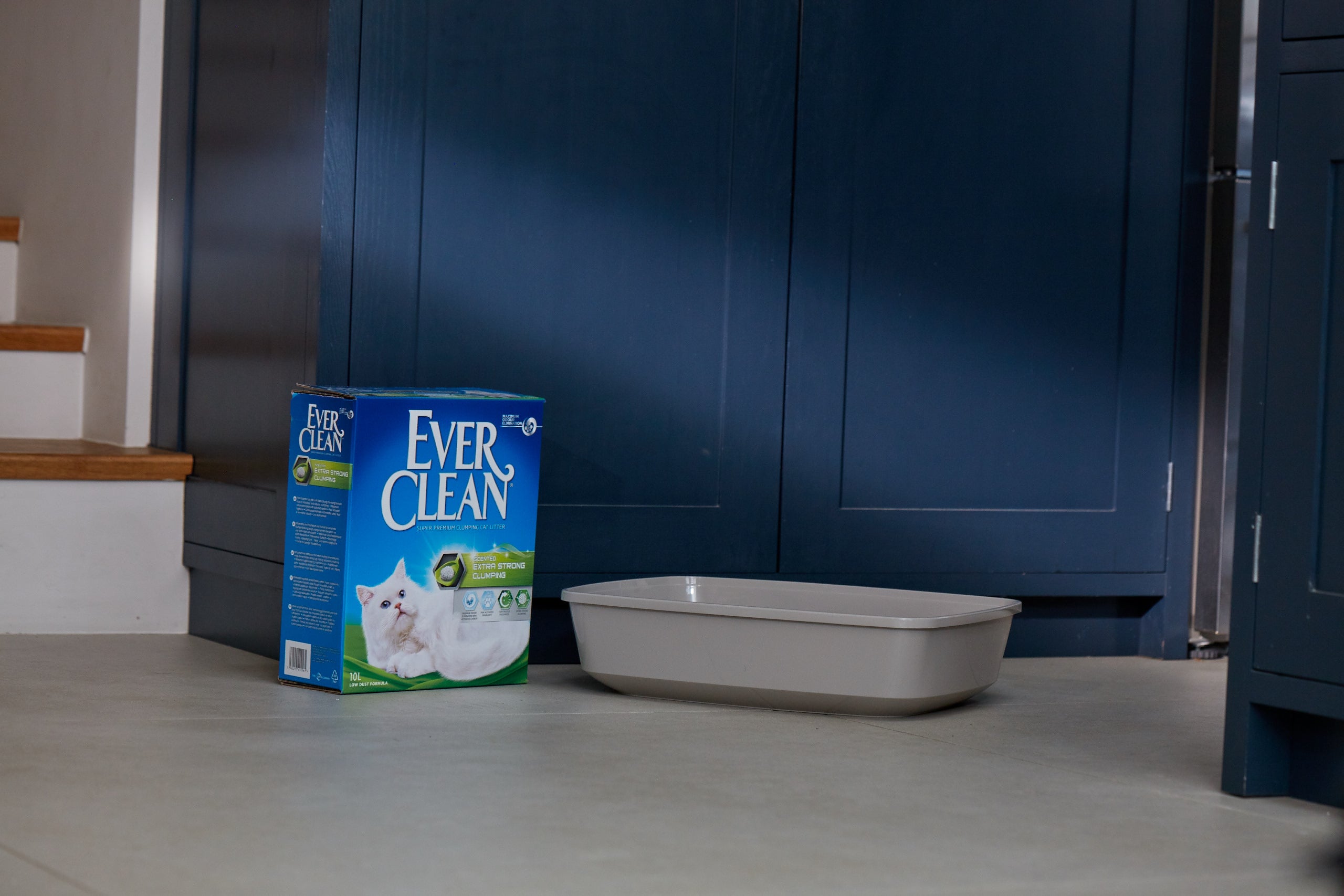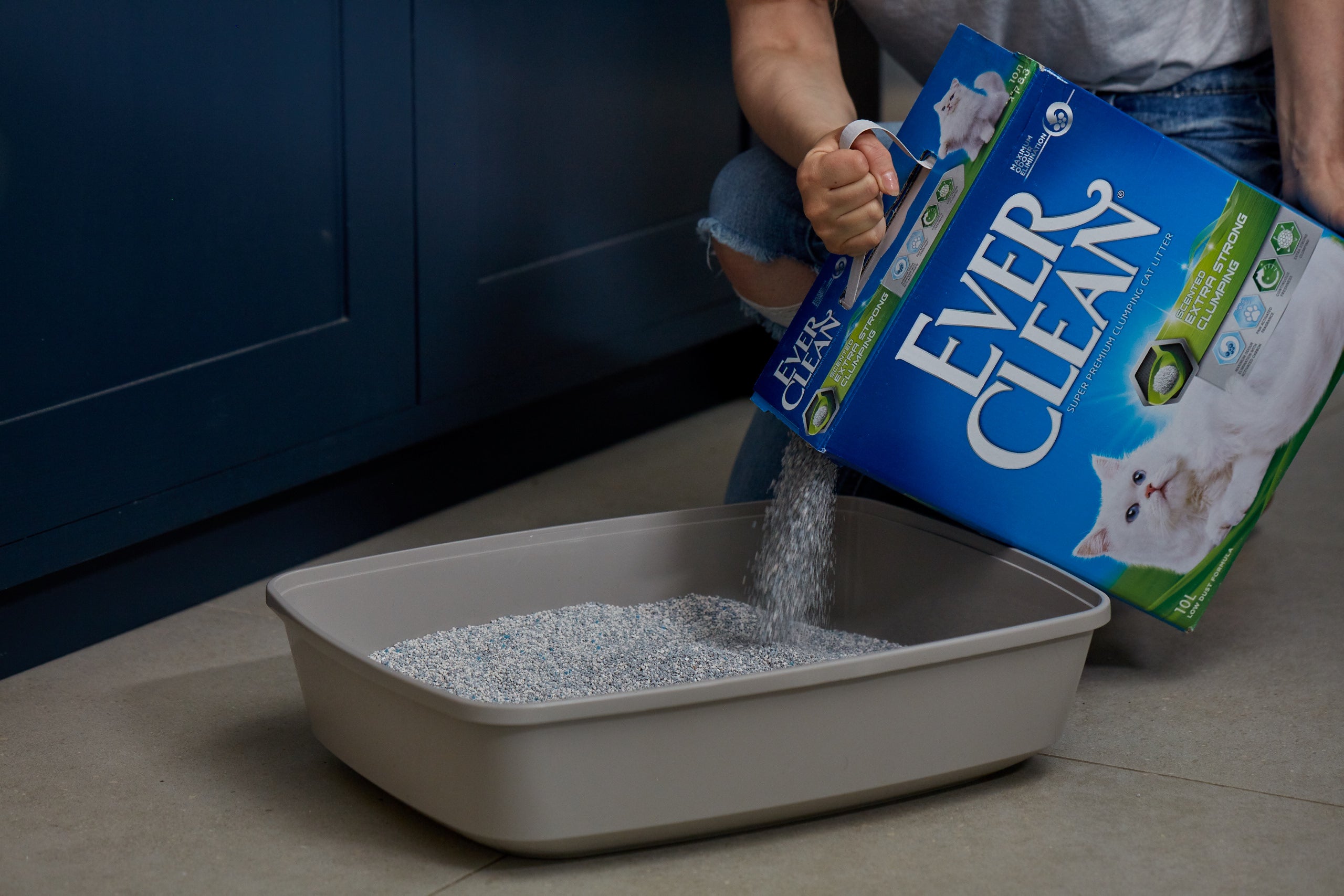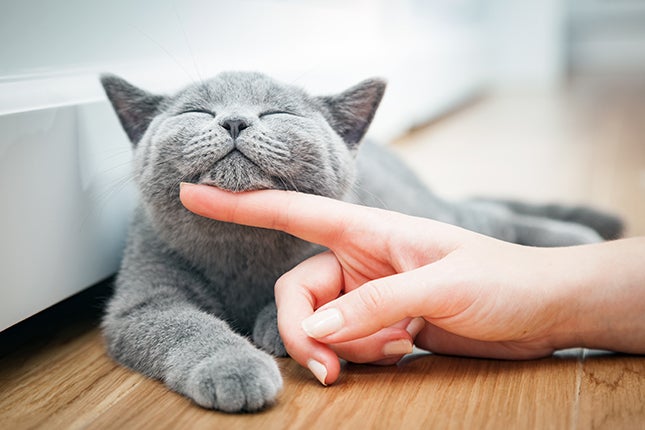 Because cats haven’t evolved to be as social as some other pets, their facial expressions and vocal ranges are more limited. Instead, they prefer to communicate with each other from a distance using scent (rubbing, spraying, scratching and urine marking). That’s a language we humans can’t understand. This means it can be hard to know how our cats are feeling, but luckily, their body language can still give us clues.
While most cat owners find it easy to tell when their cat is happy, recognising if your pet is sad or anxious can be trickier.
Because cats haven’t evolved to be as social as some other pets, their facial expressions and vocal ranges are more limited. Instead, they prefer to communicate with each other from a distance using scent (rubbing, spraying, scratching and urine marking). That’s a language we humans can’t understand. This means it can be hard to know how our cats are feeling, but luckily, their body language can still give us clues.
While most cat owners find it easy to tell when their cat is happy, recognising if your pet is sad or anxious can be trickier.
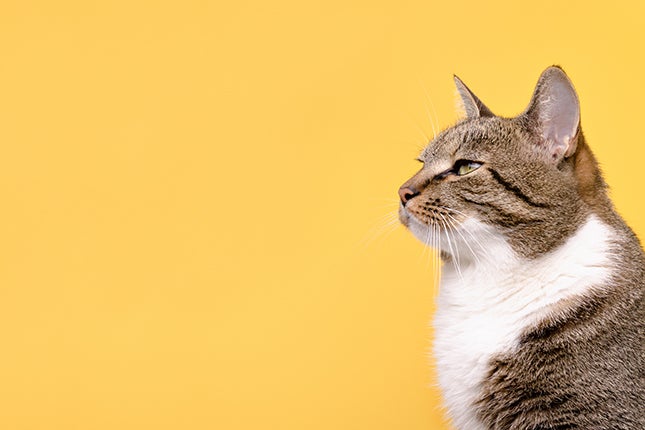 When trying to assess your cat’s body language, take a look at what’s happening around them at the same time. This will help you decide whether they are more likely to be in a good or a bad mood. Looking for the signs they show in different situations will help you recognise their feelings.
Don’t worry if you find it hard to ‘read’ them. Lots of the body language and facial expressions shown by cats can appear similar, whether our cats are feeling happy or not.
Happy cats will have relaxed bodies, with their tail upright, perhaps with a bit of curl at the end. Their eyes can look more almond-shaped and may be half-closed or blinking slowly. Their ears will usually be pointing upwards and towards you. They may roll on their backs, come to you for fuss, or do a little jump to meet your hand for a stroke.
When trying to assess your cat’s body language, take a look at what’s happening around them at the same time. This will help you decide whether they are more likely to be in a good or a bad mood. Looking for the signs they show in different situations will help you recognise their feelings.
Don’t worry if you find it hard to ‘read’ them. Lots of the body language and facial expressions shown by cats can appear similar, whether our cats are feeling happy or not.
Happy cats will have relaxed bodies, with their tail upright, perhaps with a bit of curl at the end. Their eyes can look more almond-shaped and may be half-closed or blinking slowly. Their ears will usually be pointing upwards and towards you. They may roll on their backs, come to you for fuss, or do a little jump to meet your hand for a stroke.
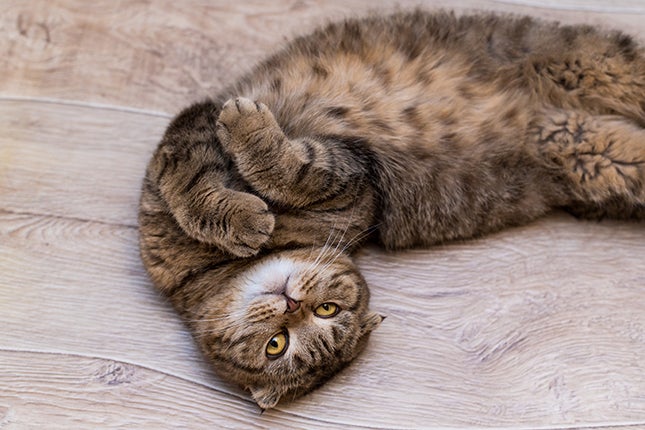 Anxious cats might crouch and have a tense body with their tail tucked in close to them or flicking. Your cat’s eyes might look wider with big pupils – but remember, this can also happen in low light conditions or if they are excited. Their ears will be pointing upwards but facing outwards so they can hear everything around them. They will likely hide away.
Anxious cats might crouch and have a tense body with their tail tucked in close to them or flicking. Your cat’s eyes might look wider with big pupils – but remember, this can also happen in low light conditions or if they are excited. Their ears will be pointing upwards but facing outwards so they can hear everything around them. They will likely hide away.
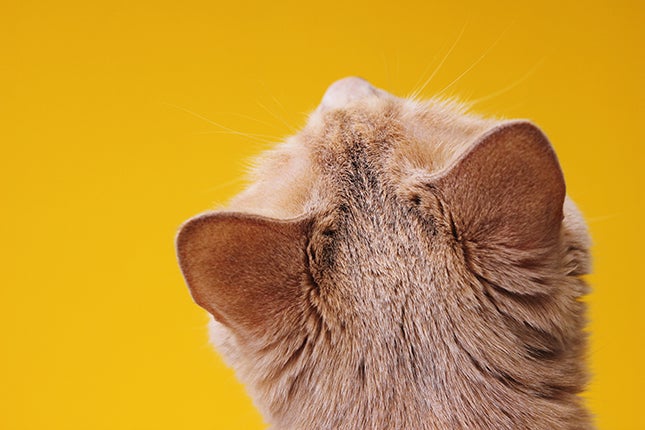 Very upset cats will have tense bodies and may try to make themselves look bigger by making their fur stand on end. Their tail might be tense, tucked in close or flicking rapidly backwards and forwards. Their ears may be lowered or even flat against their head. They may hiss or swipe at whatever is making them so unhappy.
What about purring? Most people would assume that a purring cat is always a happy one. For the most part, our cats do purr when they’re content. If their body language is relaxed, they probably are, too. But sometimes, cats can also purr if they’re anxious, worried or in pain. If your cat is purring at a time when it would be unusual for them to be happy (like at the vet), pay attention to their body language because this will be a better hint of how your cat is feeling.
Find out what is behind your cat’s sudden change of behaviour...
One day, they are happily digging in the litter tray. The next, they’re nowhere to be seen and there’s a bad smell behind the sofa. It’s time to work out what’s wrong.
Very upset cats will have tense bodies and may try to make themselves look bigger by making their fur stand on end. Their tail might be tense, tucked in close or flicking rapidly backwards and forwards. Their ears may be lowered or even flat against their head. They may hiss or swipe at whatever is making them so unhappy.
What about purring? Most people would assume that a purring cat is always a happy one. For the most part, our cats do purr when they’re content. If their body language is relaxed, they probably are, too. But sometimes, cats can also purr if they’re anxious, worried or in pain. If your cat is purring at a time when it would be unusual for them to be happy (like at the vet), pay attention to their body language because this will be a better hint of how your cat is feeling.
Find out what is behind your cat’s sudden change of behaviour...
One day, they are happily digging in the litter tray. The next, they’re nowhere to be seen and there’s a bad smell behind the sofa. It’s time to work out what’s wrong.
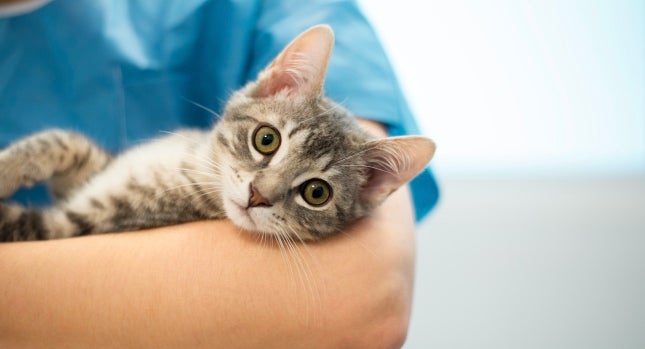
Rule out some common health conditions first.
Is it your cat’s health? You’ll need to become a cat detective for this one. Pay special attention to your cat - if they have decided they’d prefer to go outside, you can carry on as usual. But if they are not going at all, then it’s time to act. It’s common for cats to hide a problem with their health. They’ll often suffer in silence, making it difficult to spot that something is wrong. Many reasons for a change with their litter tray are no cause for alarm, but you’ll want to rule out any cat health problems first. A trip to the vets will put your mind at ease. If there does turn out to be something wrong, your vet might spot a common cat health problem such as a urinary tract infection, cystitis, constipation, or something else. Cats with these conditions may also be drowsy or have stopped eating and drinking. Kidney disease, meanwhile, may mean they urinate more. Got the all-clear from the vet? Read on for more reasons they may have stopped using the litter tray.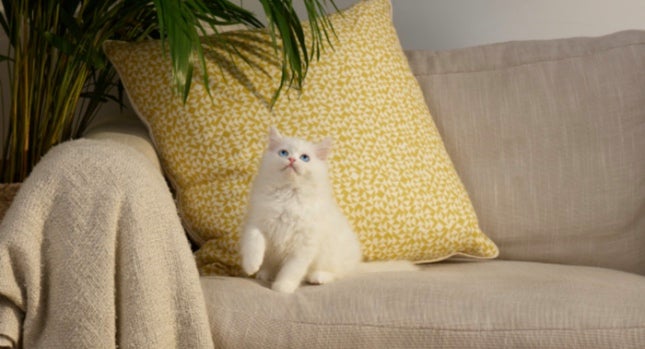
Little one not so little anymore?
Tips for kittens If your little one has outgrown their cat litter tray, they may find another place to go instead. It might be outside in the garden, or it could mean cat urine on your carpet. While it’s best to start kittens off in a smaller litter tray, you’ll need to replace it as they grow. Otherwise, they’ll soon find somewhere else with enough space for them to move and turn freely. Aim for a litter tray that’s one-and-a-half times as long as your cat from nose to tail. [caption id="attachment_1076" align="alignnone" width="645"]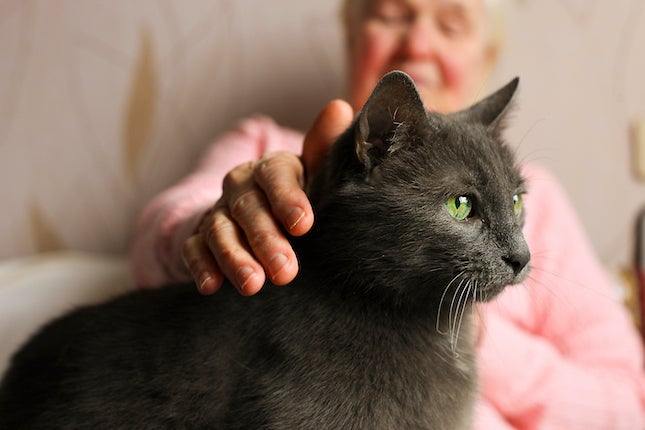 Big old cat sitting on elderly woman's lap. Senior lady pets her blue russian kitty. Grandmother smiling & petting her mature domestic animal, wrinkled hands. Close up, portrait, old friends concept.[/caption]
Big old cat sitting on elderly woman's lap. Senior lady pets her blue russian kitty. Grandmother smiling & petting her mature domestic animal, wrinkled hands. Close up, portrait, old friends concept.[/caption]
You can teach an old cat new tricks
Tips for older cats In our later years, we all need a little extra help with things that used to come easily. Just ask your older relatives! As the years go by, your cat’s joints may stiffen due to arthritis and prevent them from climbing in and out of a tray with high sides. Their eyesight may not be what it once was. And they may not be able to jump up to a litter tray in a high place like they once could. Help your older cat by making the litter tray more easily accessible. Choose one with lower sides that’s easier to climb into. Pop it in an easy-to-reach place. And show them where it is, so they’ll know how to get back into old habits.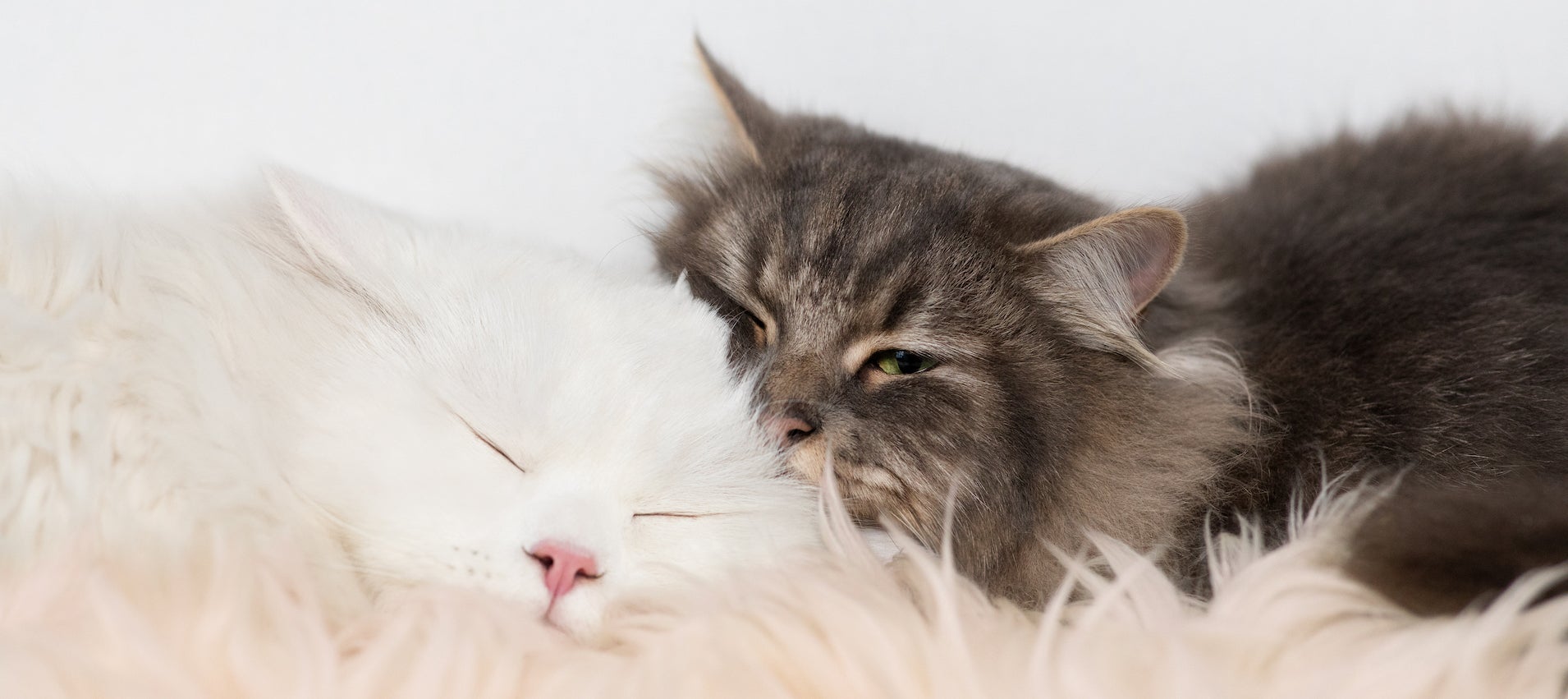
Has one of your other cats staked their claim on a shared litter tray?
Got company? In homes with more than one cat, it’s essential to make sure everyone has enough space to go about their business in peace. If one of your cats decides to become territorial over a shared tray, it’s no wonder that the others would go outside the litter tray. Cats sometimes need privacy just like us humans! Every cat and home is different but, in general, we recommend one litter tray per cat, plus one spare. If you have three cats, that means four litter trays. Place them in different areas of your home so that they won’t feel threatened or closed-in when they’re trying to go.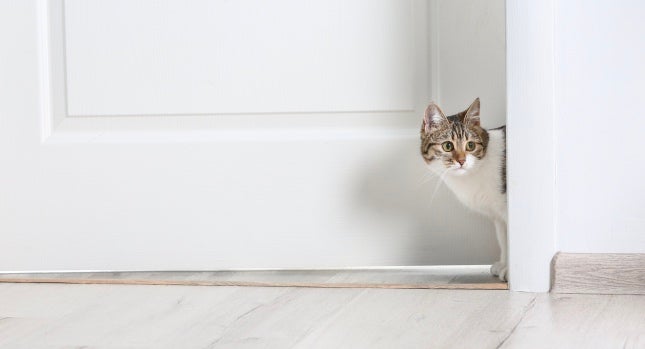
Has something happened at home to spook your cat?
What else is going on? Your home is your cat’s kingdom. Their territory to roam, the place they feel safe. If something unexpected happens, there’s no telling how your cat will react. There are lots of reasons your cat could be spooked: - Children are visiting your home for the first time since you’ve had your cat - Your friend has popped round for a coffee and brought their pet dog - Fireworks or a thunderstorm shook the house - A new cat in the neighbourhood isn’t getting on with your cat - You are packing up to move house, or have just moved - You’ve suddenly switched cat litters instead of making a gradual change - Plus many more reasons. There’s no single answer to helping your cat find their confidence again. Be patient, confident and kind to show kitty there’s nothing to worry about. Give them time and space if they need it, and don’t force them back into the litter tray. They will show you when they are ready. In time, they’ll be feeling themselves again - and back to using the tray! How to give them the best possible start How can something so tiny get up to so much mischief? That’s a question you’re sure to be asking yourself when you have a new kitten. Another one will be how you can give your kitten the very best start in life. Luckily, we’ve got all the answers you’ll need. Are you trying to choose the right litter tray or help litter train growing cats? Then think of this as your complete guide to creating a perfect home environment for your little one.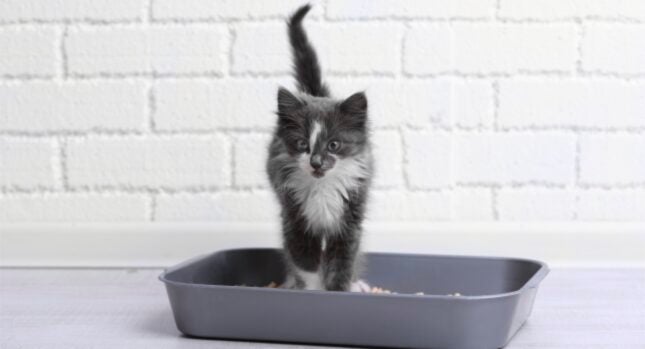
You’ll need a few essentials before your new kitten arrives.
What your new kitten will need Before your kitten arrives, you’ll want to make sure you have a few things ready and waiting for them. 1. Their first litter tray Cats come in all shapes and sizes. There are Bengal and tabby cats, British Shorthair and Ragdoll cats and many more. Choosing the perfect cat litter tray is a tough task. Any cat will need plenty of room to turn around and dig in their litter tray. Measure them from the tip of their nose to the tip of their tail and choose a tray at least that large in one direction. It may be bigger than you thought! Of course, a tiny kitten might not be able to climb into a tray with high sides. Pick one with a lower lip on one edge to make it easier for them to hop in and out. They’ll soon outgrow their first litter tray, so you’ll need to replace it regularly.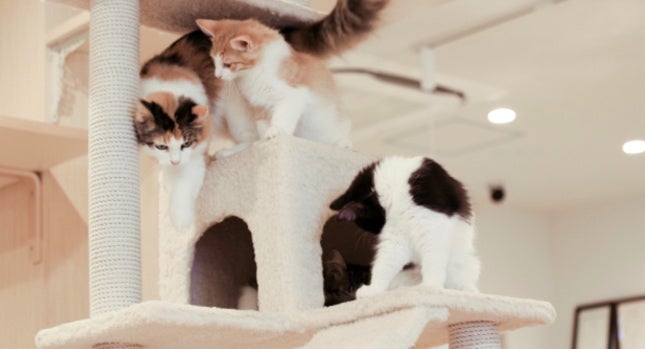 2. A litter scoop
We don’t recommend handling used cat litter. It can be harmful, especially if you’re pregnant or unwell. Buy a litter scoop and you won’t have to!
3. Your first bag of litter
There are lots of different types of cat litter available. It’s worth buying one made especially for kittens to begin with.
Ever Clean Litterfree Paws is made from our high-quality clumping clay cat litter. We’ve designed it with larger granules that won’t get stuck between tiny paws. It’s our best cat litter for kittens and cats.
The first weeks and months of its life are when a young cat forms many of its habits and preferences. Don’t fall into the trap of opting for a less-effective litter. Choosing a premium product right from the start is a great way to make sure your home is always a happy, healthy environment for both you and your cat.
2. A litter scoop
We don’t recommend handling used cat litter. It can be harmful, especially if you’re pregnant or unwell. Buy a litter scoop and you won’t have to!
3. Your first bag of litter
There are lots of different types of cat litter available. It’s worth buying one made especially for kittens to begin with.
Ever Clean Litterfree Paws is made from our high-quality clumping clay cat litter. We’ve designed it with larger granules that won’t get stuck between tiny paws. It’s our best cat litter for kittens and cats.
The first weeks and months of its life are when a young cat forms many of its habits and preferences. Don’t fall into the trap of opting for a less-effective litter. Choosing a premium product right from the start is a great way to make sure your home is always a happy, healthy environment for both you and your cat.
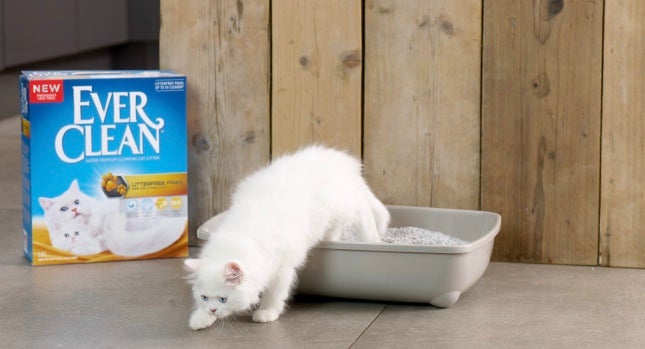
Litter training can begin once your little one is around 3-4 weeks old at the earliest.
When does training start? Your litter tray is ready, you’ve chosen their cat bed, toys and food and your new kitten has arrived - congratulations! Once they are around 3-4 weeks old, you can begin litter training. That means if your pregnant cat is having kittens of her own, then you needn’t worry about litter training at all for the first few weeks. Their mum is the best teacher, and she will take care of any mess herself. Are you buying from a breeder or choosing cat adoption or a kitten rescue near you? Then your kitten should already be old enough to have started using the litter tray when you bring them home. You can begin their training as soon as they’re settled in.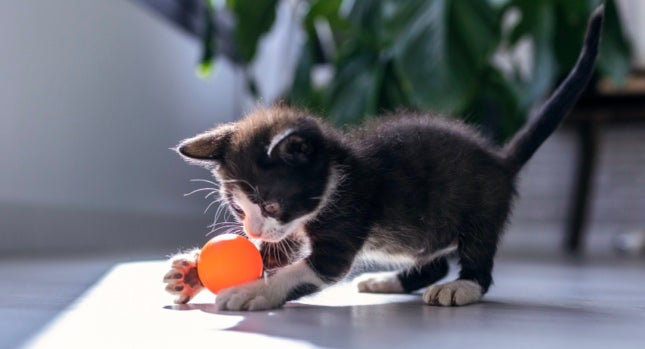
A kitten’s mother helps it know when to go, and you can do the same.
Cat litter tray training First of all, pop the tray somewhere out of the way so your kitten won’t be disturbed while using it. It should be easy for them to find and away from their food and water. Your kitten might take to their new litter tray right away, or it might take a few weeks for them to get the hang of it. Either way, be patient and go at their pace. Remember, everything will be new and possibly a little scary for them when they arrive at your home. If you have given it time and still feel they are struggling, here’s what you can do. Wait until your kitten is feeling happy and relaxed. Wet your hand with lukewarm water, lift the kitten up, then gently rub its tummy with the moisture to encourage it to need to go–just as its mother would by licking. Then place them in the litter tray and wait until they are finished. If your kitten jumps out of the tray before they’re done, that’s fine. Calmly pick them up and repeat the tummy tickle before placing them back in. You might need to do this a few times at first.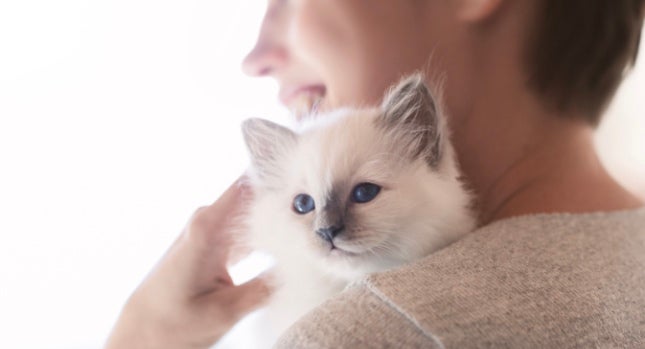
Be patient and your kitten will soon get the hang of the litter tray.
Training tips Most kittens will naturally go when they need to - and doing it for themselves is the best way for them to learn. You can help reinforce the training by praising them every time they go. Never shout or punish your cat if they have any accidents - just clean everything up with a paper towel and quietly pop that in the tray to show them where to go.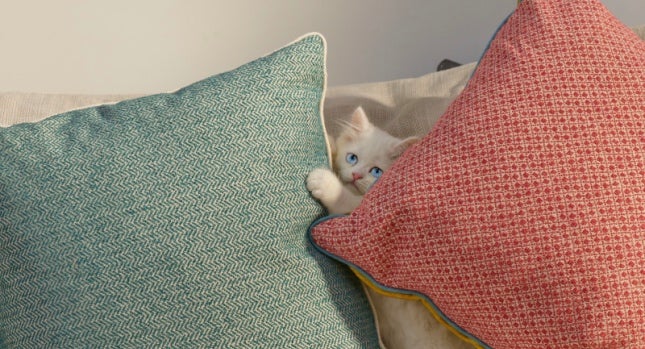
If your cat isn’t going at all, they may have an urgent health problem.
Shy bladder? If your kitten isn’t going in the tray, they might have found somewhere else they prefer. First, clean up the mess to remove any odour. You might choose to place an extra tray in this area - your little one is telling you that this is a place they feel safe. How often should you change cat litter for your kitten? They prefer a nice, clean tray so remove any tight clumps daily and throw them away to keep things hygienic. If your kitten isn’t going at all, they may be constipated. Make sure they have access to plenty of fresh, clean water. However, it can also indicate cat health problems such as kidney disease or cystitis. If you’re at all concerned, get them to the vet - it could be urgent.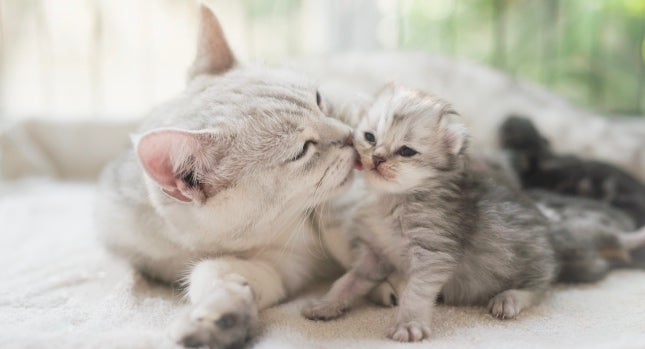
We all need our privacy, and your other cats will appreciate a little space away from the kitten.
Room for one more Your new kitten will take up lots of your time and attention as you begin your life together. But, if you have other cats too, make sure you take a few moments to make sure they are happy. We all need our privacy, and cats are no different! It may be a little disconcerting for adult cats to have a kitten running around near their litter tray. Also, if the litter you use for your adult cats keeps being tracked around the house by tiny paws, you might decide to move the adults’ trays to an area the little ones can’t reach. A happy home for all Whether it’s just you and your kitten, or you have a busy household with children and other pets, we want to help make your home an environment of wellbeing for everyone. We hope you have lots of fun together! Cats are famously clean animals. Just like us humans, they like to wash often and keep their waste hidden away. So, it stands to reason that a nice, tidy litter tray is best for both you and your cat – but even the cleanest cats can be messy from time to time!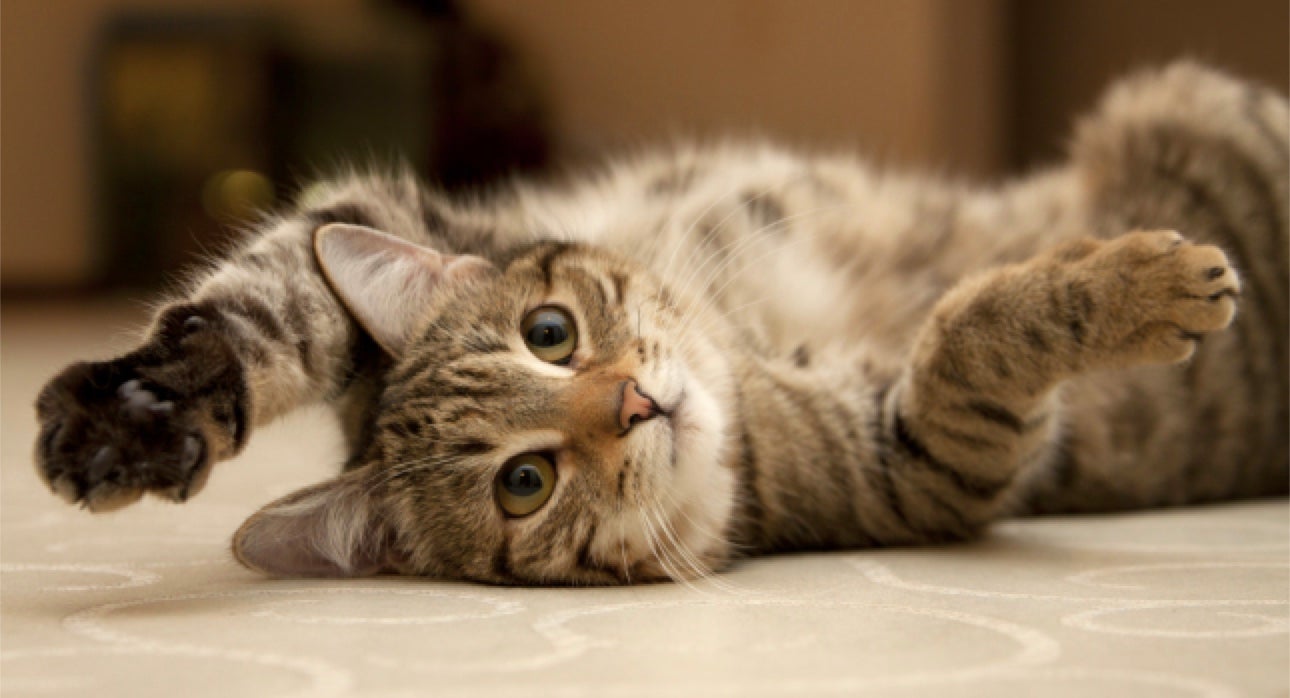
Put on your detective’s hat and solve the mystery of your litter tray mess.
Tracking: the prime suspect If there’s a trail of litter leading from the tray to your cat, you can probably blame tracking. This is what we call it when cat litter gets caught between the pads on your cat’s paws, or in their fur, and carried across the floor. Paws come in all shapes and sizes, so you might like to try a cat litter with a larger granule that won’t get stuck so easily. It’s why we designed Ever Clean Litterfree Paws for kittens and cats.
Dodge the mess by choosing the right cat litter and litter tray.
What else could it be? If there’s a bigger mess, or your cat has even managed to upturn the whole litter tray, here are some quickfire tips: 1. A litter tray with higher sides can thwart your enthusiastic digger. 2. Add enough litter to the tray - too little and your cat will have to dig harder. 3. Make sure your litter tray is one-and-a-half times as long as your kitten or cat so they can freely turn. 4. If your cat has sent the litter tray flying, switch to one with a non-slip base. A litter tray mat can also help - but make sure it is comfy on your cat’s paws. 5. Entrance too high? Older or less mobile cats may make a mess if they have trouble climbing in. 6. Never shout or punish your cat - you’ll do more harm than good. Use positive reinforcement to teach them good habits.Think all cat litter smells bad? Think again.
It’s a myth that having a cat means you’ll need to put up with a smelly home. Or that you’ll need expensive air fresheners to cover unwanted odours. If you take care to choose the correct litter for your needs, use it properly and look out for any other reasons for malodour, there’s no reason why your home can’t be a happy, healthy environment for both you and your cat.The type of cat litter you choose can make all the difference when it comes to malodour.
Not all litters are equal Some litters are smellier than others. Basic wood cat litter and paper-based litters can be cheaper than those made with clay, but usually don’t clump or manage odours as effectively. The fibres absorb cat urine but most are likely to stay wet. This is a perfect environment for bacteria to multiply and odours to worsen if the litter is not replaced often. Manufacturers may use added ingredients or alternative manufacturing processes to try and remedy these problems. Silica cat litters are more absorbent than paper. The material they are made of is commonly used for protecting shoes and electronics from moisture and humidity. However, it’s important only to choose high quality silica litters made with ingredients that are specially formulated to be safe for cats. Also, if the crystals are not comfortable for your cat’s paws, they may choose to go elsewhere. Ever Clean litters are made with superior bentonite clay, which our rigorous laboratory tests have found to be the best cat litter material and the most absorbent. It’s a soft, natural material with superior odour control that is gentle on paws and won’t leave any unhygienic liquid in the tray. We can help you choose the right kind of cat litter for you and your cat. [caption id="attachment_1074" align="alignnone" width="645"]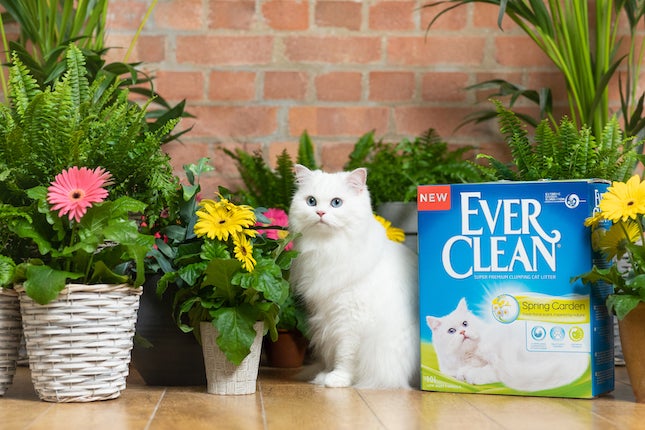 Rachel Oates for Ever Clean[/caption]
Rachel Oates for Ever Clean[/caption]
After you’ve removed unpleasant odours, bring some more pleasing smells to your home.
Good scents Whether to choose a scented or unscented cat litter is completely down to you and your cat. Some people prefer lightly fragranced litter or cat litter freshener to cover any odours created while the litter tray is in use. This can make the home a more pleasant environment. All our Ever Clean scented litters are safe for cats. Others may be more sensitive to odours and decide that an unscented litter is best for them. There are also some cats that prefer only to use litters without scent. That’s not to say you can’t also use your own natural air fresheners nearby – such as natural oils or even fragranced plants. As always, do check that anything you bring into your home is not harmful to cats.If unwanted smells persist, go back to basics to make the cat litter as effective as possible.
Use your tray right For many people, the cause of unwanted odours around the litter tray may be that the tray isn’t filled properly or changed often enough. Cats need plenty of litter in the tray to allow them to dig and move around – just as they would outside. We recommend filling your litter tray to a depth of around 7cm. Any less isn’t best for your cat. It can also cause unwelcome smells as the litter won’t be able to clump properly and liquid may collect on the base of the tray. It’s also important not to overfill the tray as your cat may dig too much and spread the litter outside of the tray onto nearby soft furnishings. Always clean the litter tray after it’s completely emptied. This also applies to self-cleaning litter trays. You’ll help remove smells and keep everything hygienic and healthy for your feline friend. Ever Clean is a clumping clay cat litter, which means you won’t have to change it as often as other types of litter - you simply scoop out the tight clumps every day or so. Whichever litter you choose, make sure you follow the manufacturer’s instructions to prevent odours. With a paper-based litter, this may mean a complete change of litter every time the tray is soiled. [caption id="attachment_1076" align="alignnone" width="645"] Big old cat sitting on elderly woman's lap. Senior lady pets her blue russian kitty. Grandmother smiling & petting her mature domestic animal, wrinkled hands. Close up, portrait, old friends concept.[/caption]
Big old cat sitting on elderly woman's lap. Senior lady pets her blue russian kitty. Grandmother smiling & petting her mature domestic animal, wrinkled hands. Close up, portrait, old friends concept.[/caption]

